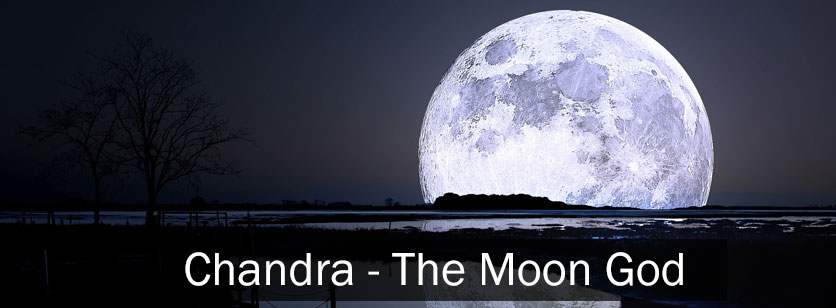
Hindu culture is full of religious devotions, rites, practices, beliefs, traditions and of course, various rituals of fasting. As per Hindu beliefs, every element of nature holds specific resemblance to the Almighty. For example, Monkey is a manifestation of Lord Hanuman, Elephant of Lord Ganesha. Not just animals, the visible planets are also worshipped by the Hindus and hold utmost resemblance to the deities, such as The Sun and The Moon. You will be surprised to know that the Hindu calendar is based on waxing and waning of the moon (lunar calendar).
The Moon is considered important for various reasons across the world! Breaking fasts after seeing this celestial body is an act experienced by almost every Hindu in their houses. That’s why, Purnima (full moon day) and Amavasya (no moon day) not only affect the rising of tides, but also the soul and minds of humans. Thanks to the conventional Indian movies, where Tantric is shown performing black magic on Amavasya, while the wives celebrating Karva Chauth on fourth day of Kartik month (full moon day).
Moon in Hindu Mythology:
Anasuya and the Moon
It is believed that during the creation of the Universe, Lord Brahma created seven Rishis namely Pulastya, Vashishta, Marichi, Pulaha, Atri, Kratu and Angiras to assist Brahma in creating the Universe. Sage Atri was married to Anasuya and had no child, so by the Trinities (Brahma, Vishnu & Mahesh) blessed them with three sons, Durvassa, Dattatreya, Soma (Chandra). With his full devotion, Soma performed sacrament of penance and was blessed by Trinity that influenced the life of every human; growth and fertility of medicinal herbs and provided moonlight with the help of the divine Suryadev. For this reason, He was bestowed with the status of Navagraha and the originator of Lunar dynasty. Later, Soma was endowed the title of Lord Chandra with the blessings of Lord Vishnu.
Ganesha and the Moon
Another myth states that one should not look at the moon on the eve of Ganesh Chathurthi, the month of Sharavana. One day, when Lord Ganesha was returning home, after having heavy meal, he stumbled down hard and got dirty. Chandra burst into guffaw after seeing pitiable condition of pot-bellied Ganesha. Ganesha got angry and felt humiliated. He cursed Chandra that his arrogance of being handsome would soon be broken and he would disappear from the sky. Chandra realized his mistake and apologized. Lord Ganesha, the kind-hearted deity, soon absolved him and lessened the effect of his curse.
Daksha and the Moon
It is believed that Twenty-seven daughters of Lord Daksha Prajapati were married to Lord Chandra on one condition, that Chandra would love all his wives equally. However, Chandra couldn’t keep his promise and loved Rohini most among all his wives. This attitude of Chandra made other wives felt dejected and they complained to their father. Chandra kept ignoring those endless warnings of his Father-in-law and as a consequence, Lord Daksha burst into anger and cursed him that he would gradually fade away. Helpless, Chandra went to Graceful almighty Shiva to seek help. Though the effect of curse could not be ignored completely, still Lord Shiva adorned Chandra on his matted hair and prevented him to further diminish. Therefore, Shiva, regarded as Mahakaal (beyond time), controlled the waxing and waning of the moon. During Krishnapaksha(for 15 days), moon wanes and during Shukalpaksha (the bright day), the moon waxes periodically.
Thus, Purnima occurs after 14-15 days, followed by Amavasya. This periodic change in the moon’s size results into 5 different shapes (patterns) of the moon:
- Invisible Moon
- Crescent Moon
- Half Moon
- Gibbous (more than half) Moon
- Full Moon
Amavasya and Purnima
Both Amavasya (no moon day) and Purnima (full moon day), hold equal importance in Hindu culture.
- Amavasya:
- Purnima:
- Fasting:
Some consider this day as an ill-omened event, as ghosts and evil spirits are in complete control and power on this day. The practice of Tantras and black magic is mostly performed on this day. This is the major reason why, any journey or commemoration related to an auspicious deed is avoided on this day. However, some consider it be an auspicious event. On this day, Hindus offer homage to their ancestors and conduct Pitra Shanti puja. The prominent festival of India, Diwali, also falls on Amavasya. This eliminates the darkness as lights are lit across the houses, prohibiting evil spirits from entering the house.
Amavasya 2016 Dates
| Date | Month | Name of Amavasya |
| 10th | January | Paush Amavasya |
| 8th | February | Magha Amavasya |
| 9th | March | Phalguna Amavasya |
| 7th | April | Chaitra Amavasya |
| 6th | May | Vaishakha Amavasya |
| 5th | June | Jyeshtha Amavasya |
| 4th | July | Aashadha Amavasya |
| 2nd | August | Shravana Amavasya |
| 1st | September | Bhadrapada Amavasya |
| 30th | September | Ashwin Amavasya |
| 30th | October | Kartik Amavasya |
| 29th | November | Margashirsha Amavasya |
It is considered as one of the most auspicious days of Hindu calendar. The moon shines with resplendent brightness, eliminating all negativities and evil spirits. This event leads to good fortune and prosperity. Purnima, not only helps gain blessings from the God, but also act as the cleanser of souls and human minds. People offer prayers and fast for an entire day during this propitious event. Holi, the color of festivals that marks the arrival of spring season, also falls on Purnima. The full moon day is also the birth of many Hindu deities such as Lord Hanuman, Kartik, Dattareya. For every important event like marriage or Grah–Pravesh, Satyanarayana puja is considered highly beneficial for the devotees, which is observed on Purnima.
Purnima 2016 Dates:
| Date | Month | Name of Purnima |
| 24th | January | Paush Purnima |
| 22nd | February | Magha Purnima |
| 23rd | March | Phalguna Purnima |
| 22nd | April | Chaitra Purnima |
| 21st | May | Vaishakha Purnima |
| 20th | June | Jyeshtha Purnima |
| 19th | July | Ashadha Purnima |
| 18th | August | Shravana Purnima |
| 16th | September | Bhadrapada Purnima |
| 16th | October | Ashwin Purnima |
| 14th | November | Kartik Purnima |
| 13th | December | Margashirsha Purnima |
According to the ancient Vedas, both Purnima and Amavasya have astounding impacts on the Nature. Besides this, these days are also believed to affect the mood, mind and health of human being.
The changing positions of the Moon affect the gravitational pull of the Earth, which may sometimes make a person, more fidgety, ill tempered and restless. That is the reason why people are told to fast on these days, in order to reduce the acidic content of the body and to devote maximum time to Lord Vishnu as it can help overcome the sudden outburst of emotions and anger. Devotees are also advised to take a dip in Holy River to purify their soul. It is believed that one’s wishes can be fulfilled if one holds fast on an Amavasya.
 +91 9990176000
+91 9990176000 +91 9999097600
+91 9999097600
 CALENDAR 2025
CALENDAR 2025











